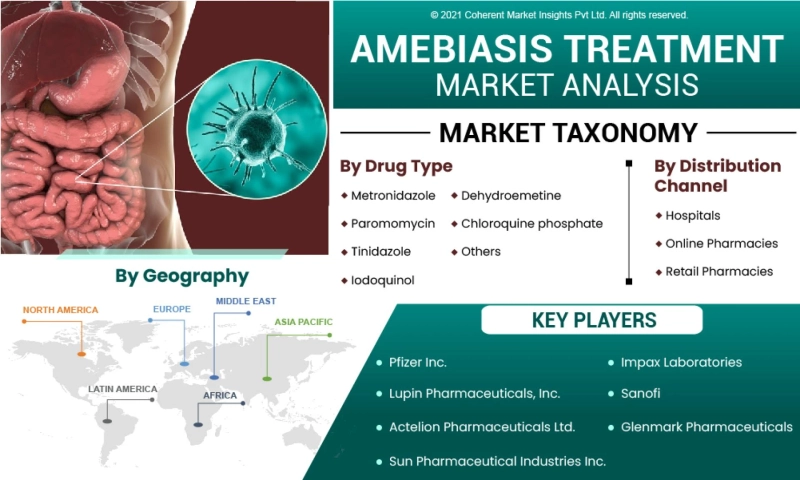Amebiasis, a parasitic infection caused by the protozoan parasite Entamoeba histolytica, continues to pose a significant public health concern globally. This infectious disease primarily affects the gastrointestinal tract and can lead to severe health complications if left untreated. However, recent advancements in the field of medicine have brought about promising developments in the amebiasis treatment market, offering a ray of hope for those affected by this condition.
Understanding Amebiasis
Amebiasis is primarily transmitted through the ingestion of contaminated food or water containing the parasite's cysts. Once inside the body, the cysts can transform into invasive trophozoites, causing symptoms such as diarrhea, abdominal pain, and fever. In severe cases, amebiasis can lead to liver abscesses, systemic infection, and even death if not promptly treated.
Traditional Treatment Approaches
Historically, the treatment of amebiasis has relied on a class of drugs called nitroimidazoles, with metronidazole being the most commonly prescribed medication. While these drugs have been effective in many cases, they are not without drawbacks. Prolonged use of nitroimidazoles can lead to drug resistance, and some individuals may experience adverse side effects.
Recent Advancements
In recent years, researchers and pharmaceutical companies have been working diligently to develop alternative treatments for amebiasis. Several promising advancements have emerged:
New Drug Candidates: Scientists have identified and tested new drug candidates that show efficacy against Entamoeba histolytica. These candidates offer the potential to combat drug resistance and reduce side effects.Vaccination Research: Efforts to develop a vaccine against amebiasis are underway. A successful vaccine could be a game-changer in preventing the disease and reducing its global burden.Improved Diagnostic Tools: The development of more sensitive and specific diagnostic tools allows for early detection of the infection, enabling timely treatment and reducing the risk of complications.Combination Therapies: Researchers are exploring the use of combination therapies to enhance treatment effectiveness and reduce the likelihood of resistance development.Public Health Initiatives: Education and awareness campaigns are being launched to promote safe hygiene practices, such as proper handwashing and water sanitation, to prevent the spread of the parasite.Conclusion
Advancements in the amebiasis treatment market are offering hope for individuals affected by this debilitating infection. While challenges such as drug resistance persist, ongoing research and innovation are driving progress towards more effective and accessible treatments. Additionally, public health efforts to prevent amebiasis through improved sanitation and hygiene practices play a crucial role in reducing its prevalence.
As we continue to navigate the evolving landscape of amebiasis treatment, it is essential for healthcare professionals, researchers, and policymakers to collaborate in the fight against this global health threat. With continued dedication and investment, we can look forward to a future where amebiasis is more effectively treated and, ultimately, prevented.
Read More….
Batten Disease Treatment Market
Vertebral Compression Fracture Devices Market



